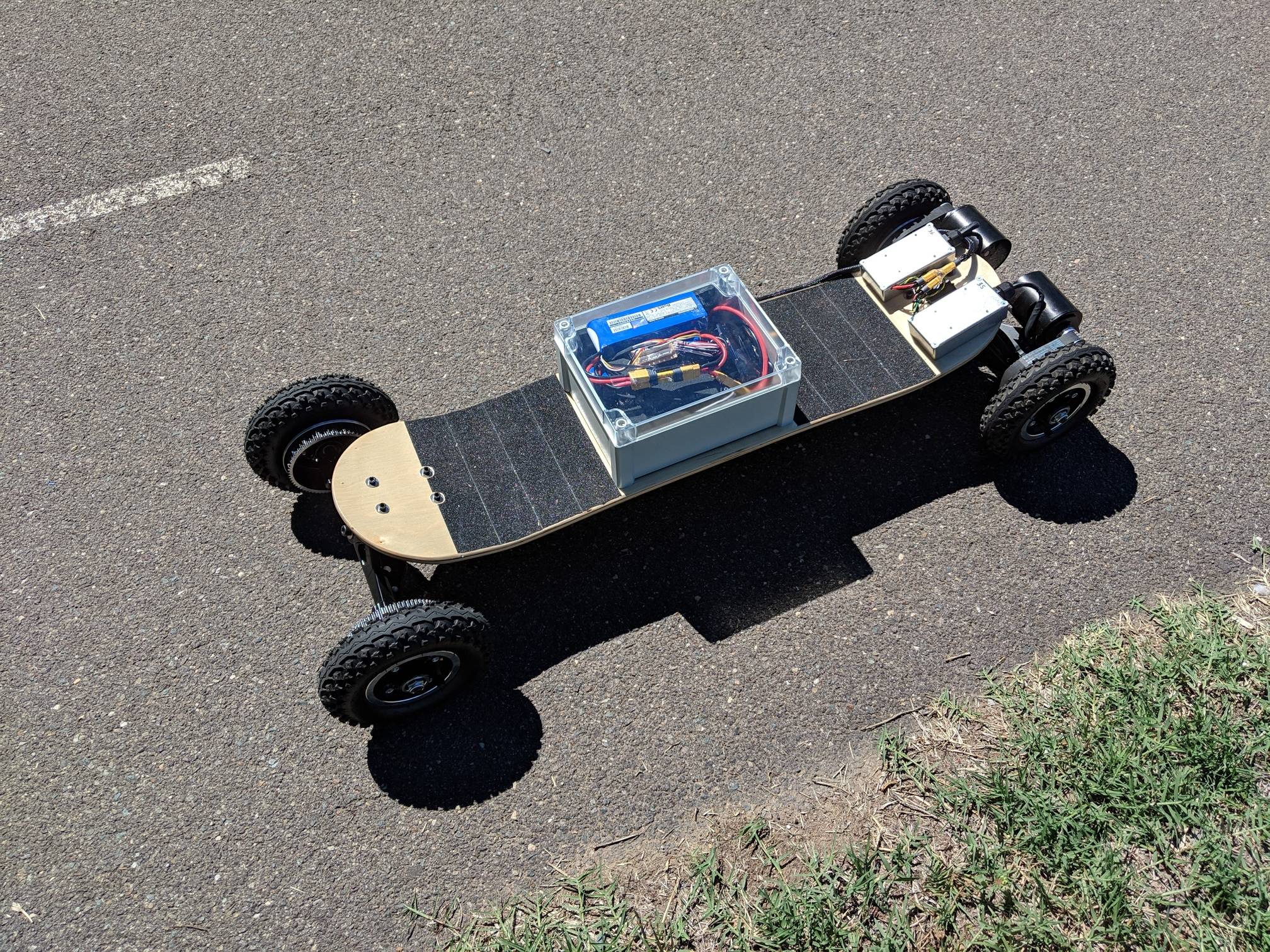Skateboard
I have a skateboard. Peer pressure got the better of me.

When you’re building things, and you’re not sure about some of your design decisions, always get a sanity check from another engineer. I did that, and later discovered that this procedure yields interesting results if your engineering buddies are as batsh*t crazy as you are.
After hearing stories of range and power issues on other boards, I wanted about a Megajoule or more for range, and low resistance battery chemistry to avoid voltage sag. I wanted brakes, I wanted lots of braking power; With electronic brakes, your motors need to handle all of the power you move from source to sink, and the motor controllers need to be equivalently rated. Expecting to use this thing as a robotics platform, I wanted good low speed performance; that means motors with hall effect sensors and high torque. Being of impatient nature when it comes to machines, I wanted to reach cruise speed in a reasonable amount of time with a nearly empty battery; for BLDC motors, that means a very generous top speed.
Put the constraints together and you have a motor pack that, at any time of day, can dump 2kW over each wheel until you’re questioning the survivability of a dismount. This is where the sanity checks failed me.
I’d set out to make a capable commuter skateboard, and instead found myself commuting on an entry-level motorsport device. Fortunately, the VESC motor controller is very configurable, and you can dial in speed and power limits to suit the legislation of your regular stomping ground.